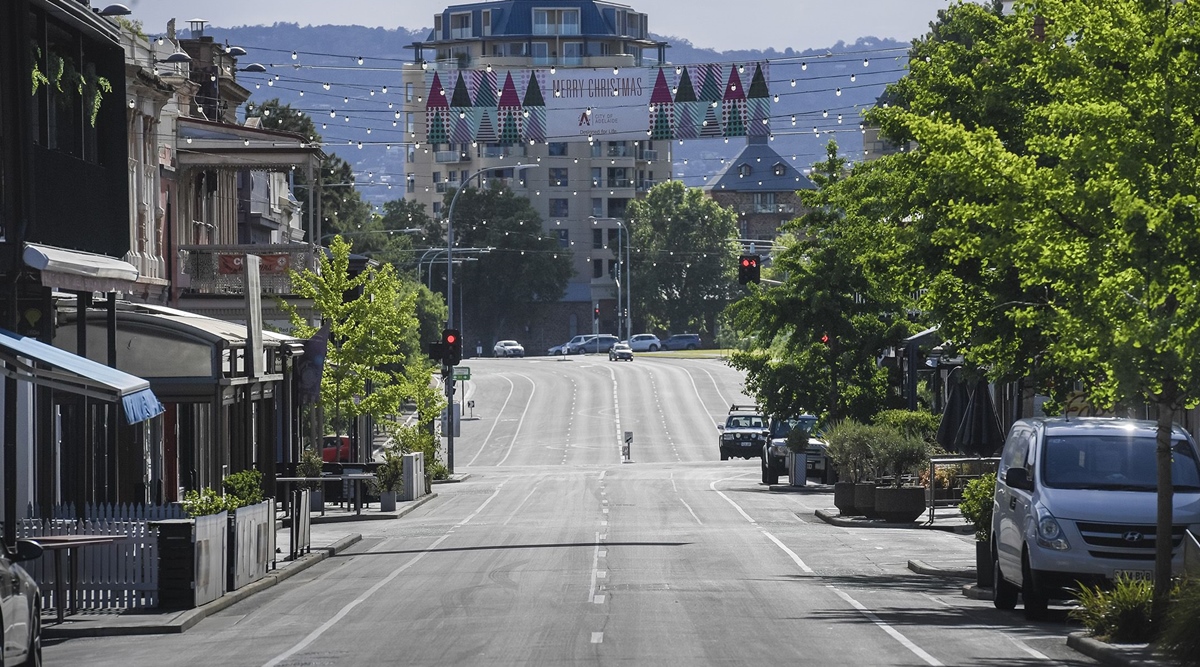

The South Australian government implemented measures to control the spread, including clear communication on at-risk locations and rapid contact tracing, as well as a stay-at-home order imposed on all residents. 3 “Dashboard and daily update,” Government of South Australia, December 2, 2020, covid19.sa.gov.au. In mid-November, just as Victoria was experiencing its first weeks with no new cases, South Australia experienced its first outbreak of COVID-19 since the initial wave in April. 2 “Coronavirus (COVID-19) daily update,” Department of Health and Human Services, State Government of Victoria, Australia, December 2, 2020,.

After implementing multiple measures in addition to lockdowns-including diversion of international flights, mandatory face coverings, and nighttime curfews-Victoria has been able to contain the spread: as of December 1, it had experienced 32 consecutive days with no new cases. 1 “Victorian coronavirus (COVID-19) data,” Department of Health and Human Services, State Government of Victoria, Australia, December 2, 2020,. This outbreak resulted in more than 800 deaths, with daily new cases peaking at 687 on August 4, primarily in the main city of Melbourne. In response, the state went into a strict lockdown for more than 100 days from July 7. Indeed, just when it seemed that Australia had the pandemic under control-toward the end of June-Australia’s second largest state, Victoria, experienced a new outbreak. While by no means perfect, these approaches proved relatively effective in limiting the infection rate in the early stages of the pandemic, as well as containing subsequent outbreaks in the states of Victoria and South Australia (see sidebar, “Australia’s response to the COVID-19 pandemic: Key facts”) (Exhibit 1). A large majority of Australians have, for the most part, adhered to the policies and solutions put forward, such as hotel-quarantine practices, lockdown measures, mask wearing, and rapid testing.

As we suggest in this article, Australia’s response to the COVID-19 pandemic to date offers valuable, actionable insights for decision makers elsewhere in the world.Īustralia’s success in containing the pandemic can be attributed in part to structural advantages that are not necessarily replicable, including the country’s position as an island nation, which makes it relatively easy to close borders. Its economic downturn during the pandemic has also been less pronounced than in many comparable economies, and it is now moving into a “COVID normal” phase of recovery. 1 “Coronavirus (COVID-19) current situation and case numbers,” Australian Government Department of Health, December 2, 2020,. With a population of around 25 million, Australia has experienced lower infection and death rates than many comparable OECD countries, with just 27,912 confirmed cases and 908 deaths as of December 1, 2020. As countries the world over face down the health, social, and economic challenges of the COVID-19 pandemic, we consider these three principles as key to the success of Australia in its fight against the pandemic so far.


 0 kommentar(er)
0 kommentar(er)
